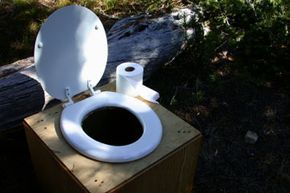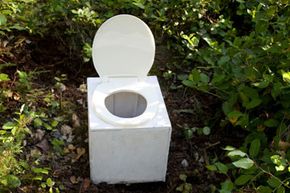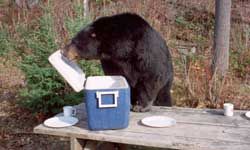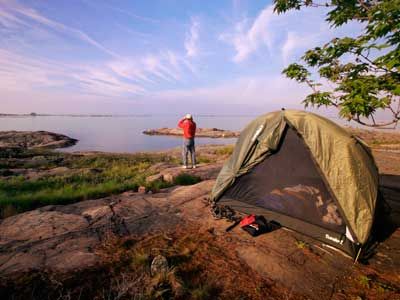You're camping in the middle of the wilderness on a beautiful summer day enjoying the beauty of nature … when nature calls. You've set up camp far away from restroom facilities, so you can't relieve yourself in a spot with indoor plumbing. You also don't want to leave human waste near your campsite because it's not only a land and water pollutant but also a health hazard. Additionally, human waste might attract wildlife like rodents, deer and even bears to your camping area. To avoid any of these less than desirable situations, you'll have to dispose of human waste in a way that minimizes both the potential to contaminate the area around you and the likelihood that it will attract unwanted critters to your campsite.
A good way to get rid of human waste is to bring a camping toilet along with you on your expedition. Camping toilets allow you to do your business and then collect it to dispose of later. When you carry or pack waste out by bagging and diposing of it once you're off the trail, you not only ensure that you're safe from unwanted wildlife but also that haven't left anything behind that might be harmful to the environment. Many U.S. parks even require campers to carry all waste out.
Advertisement
Camping toilets can range from intricate flushable systems to pretty basic "wag bags," a biodegradable double-bag system that you can use to tote away your business. Basically, there are three types of camping toilets: bucket, collapsible and flushable. Bucket toilets are the simplest type; a bucket toilet is just what it sounds like; and you can construct one on your own. A collapsible toilet folds up for easy transport and usually includes a seat and waste bag. A flushable toilet is the most elaborate type and includes a small plumbing system with a waste holding tank that helps to minimize odors.
Portable camping toilets are good choices when you're remote car camping, canoe or kayak camping or staying at any site that's far away from indoor plumbing. While you probably won't want to lug a portable toilet around during an arduous backpacking expedition, it's definitely a good option if you want to bring along a creature comfort while you're camping in one place for a while.
In this article, we'll take a look at the variety of camping toilets available and how they work. On the next page, you'll find out how to set up a camping toilet.
Advertisement



